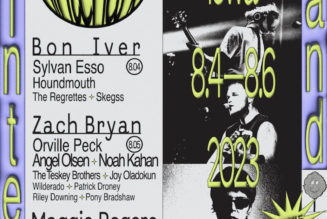
“I gave up on winning,” he says candidly.
But there’s no malice or self-pity in his response. At age 67, he’s still a first-call studio musician, playing on such recent hits as Thomas Rhett’s “Country Again,” Kane Brown’s “Homesick,” Brett Young’s “Catch” and Justin Moore’s “Why We Drink.” When Franklin listens to country radio, he rarely goes an hour without hearing himself, and that confirmation of his daily successes in the studio trenches outstrips the once-a-year status as an also-ran.
“Everybody that gets nominated wants to win, of course,” he says. “But I can’t believe at my age that I’m still being nominated. That’s flattering.”
Franklin’s absence from the winner’s circle may have something to do with the instrument itself. Pedal steel guitar requires a musician to use both hands and both feet — the classic image of a pedal-pusher is a guy hunched over the box, wavering a bar over the fretboard with his left hand, picking strings with his right while both feet rock subtly across four tone and volume controls. The steel guitarist can’t really move around onstage, and is thus easily overlooked.
“The instrument’s too hard to play to be visual,” notes Franklin. “If you’re visual, then typically you’re not playing much.”
In fact, a steel guitarist has never won the CMA’s musician of the year honor. And only this year, with the announcement that Pete Drake is bound for the Country Music Hall of Fame, is a steel player finally going to be enshrined in country’s most hallowed institution. The longtime omission is not lost on Franklin.
“If you set a steel guitar up amid a bunch of ordinary music fans, they look at that and they say, ‘Country music. That’s that country instrument’ — if they don’t know what to call it, they ID it with country music,” he says. “That’s why it always struck me [that] country music has not really acknowledged the instrument as much. The producers and artists all do, but as far as these [awards] things go, it’s not typical.”
Appropriately, neither is Franklin’s backstory. A native of Detroit, he started playing steel guitar in 1962 after being inspired by a major country crossover hit, Skeeter Davis’ “The End of the World.” (It was recorded that June, entered the country singles chart that December.) The steel guitarist, not so ironically, was Drake. By the end of the decade, steel had quietly found prominence with folk and pop artists — Poco; Crosby, Stills, Nash & Young; and Bob Dylan, who loaded up “Lay Lady Lay” with steel guitar, supplied by Drake.
Franklin’s father was an auto worker, a proud union man, and when he recognized his son’s expertise, he figured the best way to help the kid get work was to have him join the union. That was fortuitous — as interest in the steel picked up, Franklin was the only player listed on the instrument with the Detroit chapter of the American Federation of Musicians. Thus, he got work while he was still in high school, where the kids derisively called him “Hee Haw.” Franklin figured prominently in a 1970 track by Parliament, “Little Ole Country Boy”; got hired by Marvin Gaye’s musical director, McKinley Jackson; and picked up work with producer Dennis Coffey, best known as the artist on a 1971 pop instrumental, “Scorpio.” Coffey hired Franklin to play on four tracks by an unsigned band named Gallery, which ultimately included a top five 1972 single, “Nice to Be With You.”
Franklin moved to Nashville that year, but didn’t tell anyone he had played on a pop hit — he didn’t think it would help him get work. Drake, however, provided Franklin some studio gigs and encouraged him to tout his highlights. He began playing road dates for Barbara Mandrell, Dottie West, Jerry Reed and Mel Tillis, and appeared on his first country hit with George Strait’s 1985 single “The Chair.” The Bakersfield influence Franklin brought to Rodney Crowell’s “Above and Beyond,” a No. 1 1989 single, cemented his reputation: He won his first musician of the year nomination and has never looked back.
Franklin practically owned both the traditional and pop sides of country steel playing. He participated, for example, on Strait’s gentle “I Just Want to Dance With You” and Shania Twain’s then-edgy “That Don’t Impress Me Much” in the same year, 1998. His credits would stretch from Alan Jackson and Mark Chesnutt to Barbra Streisand, Dire Straits and Megadeth.
Some of that flexibility comes from his ability to “read the room,” a trait he says was heavily encouraged by… well, Drake.
“It’s a really quick assessment of the room — ‘Which way are we going today?’ ” he says. “You can’t just assume, even though it may sound like a traditional song, that you can play traditional parts on it. If the artist is trying to be experimental, you’re going to have to go somewhere else.”
Ultimately, Franklin still loves his instrument, playing weekly Monday-night dates with the western swing act The Time Jumpers and, of late, touring with Chris Stapleton, where the change of pace from the usual Nashville studio circuit is a good refresher.
“It’s like therapy for me,” says Franklin.
He survived the mid-2010s, when producers limited instrumental solos and fills and wanted more atmospheric sounds. Franklin graciously made that work, even though it forced steel even farther into the shadows. But of late, that’s changing as the support instruments regain some prominence in many country mixes. Whether Franklin ever pulls off a CMA win or not, he’s influencing the next generation, much the way that Drake influenced him. And they are likely to push a lot of boundaries, even if they don’t move much.
“The instrument has always been sparse, [unlike] piano or guitars where, you know, everybody owns one in their house or something,” says Franklin. “I don’t think the steel guitar will ever get there, but there’s a lot of young people coming along and they really want to play the instrument. They don’t want to just be ethereal.”
This article first appeared in the Billboard Country Update newsletter, which features the latest airplay, sales and streaming charts along with compelling analysis of market trends and conditions. All for free. Click here to subscribe.











